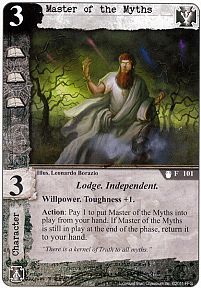Preface


This work, as all AD&D works,
is an attempt to clarify and produce material for those referees who
expect and demand high quality information for their campaigns.
<high quality(MM+PH+DMG+DDG)
: note to self / apology to the reader : i am doing the best that i can
...
i will keep on trying to approach
perfection, that which is an infinite distance from this present sub-creation
... this is the work of eternity ...
the math remains the same ... 100%
mathematical integrity ... this work comes with that guarantee ... (DDG+DMG+PH+MM)
: high quality>
<"No limit may be set to art, neither is there any craftsman that is
fully master of his craft"
-
The Instruction of Ptahhotep, c. 2100 BC>
Within its pages,
you will find details and facts that will be highly useful to you as
the DM and to your player clerics.
It is not intended as a treatment of world religions and the rightness
or wrongness of their philosophies.
It is a simple statement of the historical or literary details man
has recorded for all to see.
Do not look for a favoring of good versus evil or neutrality versus
everything else.
When historians or authors wrote about a deity in a way that made them
powerful or feared,
that is the way we made them.
In the same light, when a being was made too all-powerful (in AD&D
terms) we scaled them down to make them compatible in game terms.
The creative processes of this book differ from the other AD&D
works in that three-fourths of the information given within was drawn from
knowledgeable sources rather than from the imagination of the authors.
The names of the deities and heroes,
the weapons and powers they used,
and many of their personality traits are plain for everyone to discover
tor themselves.
What had to be creatively done dealt with concepts that were purely
AD&D
in nature.
All of the leaders of the pantheons were given 400 hit points and the
rest were scaled down from there;
the relative resistance of beings to blows and magic was derived from
studies of their battles with natural and supernatural forces;
while concepts like strength were easily assigned in the case of deities
of strength or war,
this concept is less easily applied to the more powerful deities who
have no need for massive muscles.
Alignments were perhaps the hardest AD&D
concept to deal with.and the one that will have the most debate among the
interested users of this work.
Beings like Set, Loki and Arioch are easy to classify,
but when working with the middle-of-the-road deities who were often
chaotic but known for consistent kindness,
or were rogues of the worst sort but very companionable,
it became necessary to consider them as a whole to make a judgment.
While it will be easy in any campaign to change the powers and alignments
of those beings whom you differ with,
remember that drastic changes can also influence the all important
game balance of any given campaign.
While DEITIES & DEMIGODS is ideally
suited to the taskof working deities into an AD&D
campaign format,
everything has not been covered in the book.
In the 6,000-year plus span of this work mankind has spent a lot of
that time adding to the myths dealt with herein.
We did not try to encompass everything,
and it is silly to assume that the five years or so of research that
created DEITIES & DEMIGODS could suffice.
*
<>
There are areas that were stressed because they were useful to DMs,
whereas others were left out for the very same reason.
The bookshould be used as a beginning frame work for the DM.
Sample it,
take what it wanted,
and start the gods as well as the players in a universe.
While DEITIES & DEMIGODS reveals a
great many divine powers and a great many powerful devices,
it is the duty of the DM to add to, change, and otherwise modify the
information on these pages for use in a campaign.
There is a large list of people that helped in some way with this endeavor,
and I want to take this opportunity to mention and thank them:
my parents,
my wife Janean,
Brian Blurne, Ernie Gygax. Will Nlebling, Mike Carr, Kevin Blume, Dave
Sutherland,
and E. Gary Gygax,
who created a game that will outlast us all.
<sig>
<>
*
<note: about the spell selections for the deities
... don't worry about this ... someone is doing an entry index to the Dictionary
of Mythology, by J.A. Coleman>
<while the index is intended for museum & temple
use (et al.), it also serves as a reference for the (non-official) (spell)
detail for the DDG>
<this detail
is intended to be done systematically:
1. Dictionary of Mythology
2. primary sources**
, with citations from the primary
sources.
Hopefully, citations will be given
for anything beyond the Dictionary of Mythology>
** primary (original sources of the myth)
secondary (English translations)
tertiary (20th+ century)
quatertiary (imaginative)
***
The Joy of Learning
if they are real, then apologies to
the deities for the misrepresentation, ea.
AD&D is just a storygame ...
hopefully, it will serve as an inspiration
and an introduction,
to myth, and other things,
wikipedia(book4)
<thanks to: Hypatia of Alexandria>
<>
*template***template*